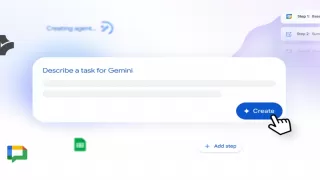The United States government has officially rolled back a key Joe Biden-era policy that allowed automatic extensions of work permits for foreign employees. The change, announced by the Department of Homeland Security (DHS), will directly affect thousands of Indian professionals and their families living and working in the US. With this move, the government aims to tighten screening and ensure all foreign employment authorisations undergo complete vetting before renewal.
What Has the US Government Changed?
Under the latest policy shift, the US has ended the practice of automatically extending Employment Authorisation Documents (EADs) for certain categories of foreign workers. Effective from October 30, 2025, the interim final rule states that automatic extensions granted during renewal applications will no longer apply. This means foreign employees will need to go through full verification again before their work permits are extended.
The DHS explained that this decision was made to reinforce national security and strengthen the vetting process. Joseph Edlow, director of the US Citizenship and Immigration Services (USCIS), highlighted that the move restores balance between security concerns and immigration convenience. According to Edlow, working in the US is a privilege, not a right, and proper screening must be ensured before granting extensions.
Why Was This Policy Introduced in the First Place?
The automatic extension policy was introduced by the Joe Biden administration in May 2022 to address significant delays in EAD renewals. At the time, the US immigration system faced a backlog of nearly 1.5 million pending work permit applications. The temporary rule allowed eligible applicants to continue working for up to 540 days while their renewals were being processed, preventing sudden job losses and disruptions for foreign workers and employers alike.
The measure was widely praised by tech companies, especially those relying on foreign talent, as it helped avoid workforce shortages. However, critics argued that it allowed certain applications to bypass full screening procedures, potentially compromising security standards. The Trump administration’s new rule, therefore, aims to restore the earlier framework that required case-by-case verification before an extension.
Understanding EAD and Its Importance
The Employment Authorisation Document (EAD) is an official card issued by the US Citizenship and Immigration Services that allows non-immigrant foreign nationals to work legally in the country. It serves as proof that the holder is permitted to work in the US for a specified period, typically ranging from one to two years, though some categories may get longer durations.
Individuals applying for EADs must file Form I-765 and demonstrate eligibility based on their immigration status. Without this document, even visa holders such as dependents or international students cannot legally work. Hence, any change in EAD renewal rules directly affects the livelihoods of thousands of families relying on foreign employment in the US.
Who Needs an EAD to Work in the US?
The EAD system applies to a variety of non-immigrant categories. Those who commonly require EADs include:
- Dependents of employees on diplomatic missions or international organisations.
- Refugees and asylum seekers awaiting status confirmation.
- Students under F-1 visas seeking Optional Practical Training (OPT) in their field of study.
- Spouses of H-1B visa holders and L-1 intracompany transferees.
- Spouses or unmarried children of beneficiaries under approved employment-based immigrant programs.
- STEM graduates (Science, Technology, Engineering, and Mathematics) applying for 24-month OPT extensions.
For many of these individuals, the ability to work is critical not only for career growth but also for maintaining their visa status. Delays or denials in EAD renewals can lead to unemployment and, in some cases, force families to leave the country abruptly.
Impact on Indian Workers and Families
The decision to eliminate automatic EAD extensions and raise H-1B visa fees could hit Indian professionals particularly hard. India remains one of the largest contributors to the US skilled workforce, especially in technology, healthcare, and research sectors. According to the US Census Bureau, nearly 4.8 million Indian Americans live in the country, with over 65 per cent being immigrants.
For many Indian families on dependent visas like H-4, EAD extensions provided vital income stability. The new rule means that even minor processing delays could result in temporary job losses. Employers relying on Indian tech talent may also face operational challenges as employees await work permit renewals.
In addition, the recent hike in H-1B visa fees, to nearly $100,000 per year, further amplifies the financial burden on employers and employees. Many startups and mid-size companies dependent on foreign talent may now find it harder to sustain recruitment costs.
What Does the Rule Mean for Current EAD Holders?
The DHS clarified that the interim final rule does not impact EADs that were automatically extended before October 30, 2025. Those extensions will remain valid until their specified expiration date. However, any renewal applications filed after this date will be subject to the new regulations requiring full verification.
This means that workers who currently enjoy automatic extensions should start preparing for the new system by monitoring their application timelines closely and submitting renewals well in advance. Immigration experts suggest that applicants keep all documentation up to date and consult authorised immigration attorneys to avoid compliance issues.
Economic Implications of the Decision
The removal of automatic EAD extensions may slow down the hiring process across multiple industries. Tech firms, which employ a large number of Indian professionals, could experience temporary staffing shortages. Moreover, administrative delays in processing renewals could discourage foreign workers from staying in the US long-term, leading to a potential talent drain.
Economists have also warned that these changes could affect the global competitiveness of American companies, particularly in the technology and innovation sectors, which rely heavily on skilled Indian engineers. Meanwhile, other countries such as Canada and Australia are becoming more attractive for skilled migrants due to their more stable visa policies.
How Indian Applicants Can Prepare?
Experts recommend that Indian nationals currently working or studying in the US take proactive measures to navigate these policy changes effectively. Here are some practical tips:
- Submit EAD renewal applications at least six months before expiration to avoid gaps in employment authorisation.
- Stay updated with USCIS notifications and DHS rule amendments.
- Maintain clear records of all immigration-related filings and approvals.
- Seek legal guidance from licensed immigration professionals before making career moves.
- Explore alternative visa options like O-1 (for individuals with extraordinary ability) or EB-2/EB-3 green card programs where applicable.
Taking a strategic approach can help minimise disruptions and ensure continued employment authorisation amid tightening immigration controls.
What’s Next for Immigration Policy?
With the US election season nearing, immigration remains a politically sensitive issue. The Trump administration’s decision aligns with its broader focus on prioritising American jobs and reinforcing border security. However, analysts expect further policy shifts depending on political outcomes and labour market conditions.
For now, Indian professionals and students in the US must prepare for a more stringent and documentation-heavy renewal process. While the move aims to strengthen screening, it undeniably increases the uncertainty for thousands who contribute significantly to the US economy and innovation ecosystem.
The end of automatic EAD extensions marks a major shift in US immigration policy that will impact many Indian families, especially those on work-dependent visas. Combined with the sharp rise in H-1B visa fees, this move underscores a more restrictive approach toward foreign employment. While the intent is to tighten vetting and ensure national security, the immediate effect could be job uncertainty, increased costs, and added paperwork for thousands of skilled professionals who have long been an integral part of the US workforce.
As the new regulations take effect, Indian workers must stay informed, prepare documentation early, and adapt to the evolving landscape of US immigration. The global job market is changing fast, and readiness will be the key to stability and success in this new era.
Also Read: CBSE 2026 Board Exam Date Sheet Released: Check Full Detail

























